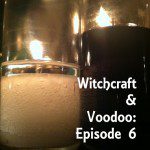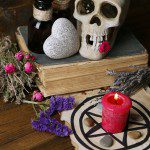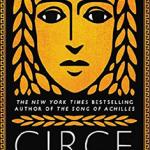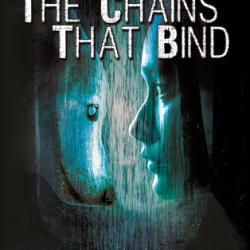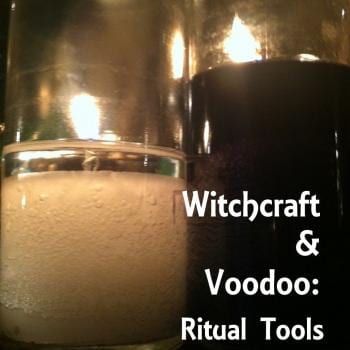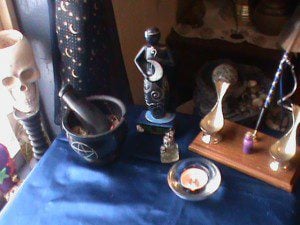
When I was a child, I used to try to make potions. I’d read somewhere about potion-making and herbalism, and I wanted to discover those secrets for myself. I would steep flowers in water in an attempt to draw the scent out of them, and I would hunt for especially strong-smelling flowers. My early perfumes had some limited success, but they would always go bad with the plant matter. I eventually read somewhere that alcohol was the basis of perfumes in order to preserve the scents, and then my next potions were of alcohol and flowers. That was not nearly as successful; nobody clarified the difference between spirits and rubbing alcohol in those books I’d read, and rubbing alcohol reeks, no matter how many flowers you put into it!
My potion making was not limited to perfume. I tried to make botanical mud masks, eyeshadows, and even khol (an experiment which resulted in my mother forever forbidding me from mixing things in the house; khol involves the use of charcoal). I would try to come up with my own herbal healing teas, and they actually had some healing value; I made a tonic out of dandelion root and burdock, for example. I didn’t have an herb dryer and I was frustrated by the way my plants would always eventually rot and mould, no matter how much direct sunlight I used to dry them. Some things worked when you hung them upside down (which I did by tying them to my curtain rod; another experiment that did not amuse my mother) and some things did not.
I remember being really excited when my friend Trixie pulled out a lovely perfume-making kit she had been gifted by her parents. What wonderful magic was this! Here lay the captured (artificial) scents of dozens of flowers and fruits and things, for which they provided recipes to imitate the more popular commercial perfume scents. I was not at all interested in that; I cheerfully mixed up experimental batches based on my estimation of what might smell good together, founded in opening up caps and putting bottles under my nose at the same time and making a judgment call (perhaps a little more of that and a little less of this). I was gratified when Trixie and I managed to create a perfume that had her mother almost weeping; she said it was the precise smell of a flower that she missed desperately from her native Singapore, which was known as the “Queen of the Night.” My mother tried to tell me why that was a less than desirable name for a perfume in Western culture, but I was having none of it.
When I discovered witchcraft in my early teens it only created a greater outlet for my creativity. I made a scented oil from frankincense resin, a tea for good luck and healing, and dandelion wine. I still have all of those recipes in my formulary. I still have the frankincense oil; it’s still good to use. I had discovered orris root by then.
As an adult witch, I discovered herbalism, aromatherapy and crystal healing. I took courses on all of them. I bought an herb dryer. I expanded into incense blends, scented oils for magic and health and beauty, and magickal tools. I scented candles and baked magical cakes and cookies. Even being lactose intolerant and gluten free did not stop me.
I started looking up some really obscure things; like what the magickal purpose of aloeswood is, or what the original recipe for Oil of Abramelin was. I conducted experiments with traditional entheogens. I learned how to make topical creams and flying ointments.
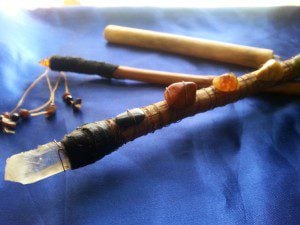
I keep what I call my apothecary, which is a cupboard where I keep a broad collection of magickal and medicinal herbs and resins in little jars, awaiting my next concoction. I have a small collection of essential oils that’s probably worth more than a thousand dollars. I also keep things that traditional witches will recognize that might give someone else the jitters; bits of my family’s hair, wrapped up in tissue and kept for life-or-death emergencies; a couple of dried corvid wings; a drop of mercury and a couple of lumps of lead; various animal skulls; sealing wax; a jar of dead wasps; another jar of dead moths. I used to keep spider web but I find it’s easier just to find some fresh stuff when you need it. So I let the spiders spin webs in the corners of my house and I only move them if they’re in the way.
I still make perfumes by putting bottles under my nose together and making a judgment call; but now I also choose the oils by magickal purpose and aromatheraputic effect; and I balance the blends based on base notes, heart notes, and top notes, and how the perfume will evolve over the course of day once it’s been applied. I carefully record precise measurements so that I can flawlessly imitate the results.
I also discovered that I liked making magickal tools. My first attempts to mimic the Golden Dawn inspired tools in Donald Michael Kraig’s book Modern Magick were crude and limited; but to be fair, I was only fourteen. Over time my crafting skills improved; from hand stitching to hand carving to hot gluing. I made a study of sigils and symbols and runes. I learned the meaning of every colour of the rainbow, the planetary association of every gem and metal, and a list of magickal correspondences that rivals 777. I taught myself how to paint with acrylics and I made a series of four mixed-media paintings to represent the four elements in my Temple space. Recently I have discovered the joys of Dremelling. I keep stones, beads, silver charms, little bits of fabric and a collection of feathers ready to hand should I need them.
My pentacle was the first one I ever handpainted on a wooden pine disk. I borrowed the design from my favourite Tarot deck. Each point has a stone in it, which was selected to represent the four elements and spirit. The stones are secreted away in the underside of the pentacle; except the citrine at its center, which rests in a concave dish of Xacto knife carving and wood filler. Were I to do it over again now, more than twenty years later, I would probably use that Dremel.
My wand is oak wood, wildcrafted by me from a copse of trees that grew on the other side of the country near the home of my bandmate from when I was a goth singer. The quartz crystals were purchased from Laurie Cabot’s shop in Salem, MA, which is a place I’ve only ever been once and which was a kind of pilgrimage for me at the time. Each of the stones on it, arranged in the order of the chakras, including the thymus chakra and the terrestrial and celestial chakras (for a total of ten stones, thus corresponding with the ten sephiroth of the Kaballistic Tree of Life, and thus, a ceremonial magician’s rainbow wand as well,) was given to me as a gift by a friend. I have recently also made myself another wand. It is made from the wood of a maple tree that came from the home I grew up in, which was struck by lightning twice. It is tipped with amber and jet.
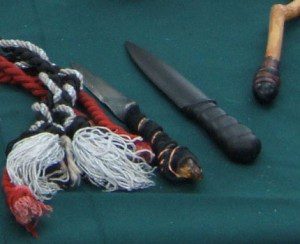
Once I even forged my own athame from an iron bar. It took full two days to create. It was certainly easy to feel the presence of the gods of the forge as I pumped bellows, laid the bar on the hot charcoal, waited until it was red hot at the tip, pulled it out with an oven glove to pound on it by dropping the hammer on it hard three or five times, then waiting another five minutes or so for it to get hot enough to do it again. Painstaking and labourious, the process of forging; something that requires endless patience and the facing of ones instinctive fears of heat and flame.
Nothing makes me happier than making something for a magickal purpose, especially if it’s unique! There’s a special magick to making something with your hands and imbuing it with power and purpose as you do so. The more effort you put into it, the more carefully you choose your symbolism, and the more research you do, the more power it will have when you put it to Work for you in magick. I always thought that this desire to make and create things, and to combine them in interesting ways that spell out a symbolic language, was the reason that we call it The Craft or The Art. Do you have any witch Crafting stories to share?
Like Between the Shadows on Facebook and never miss a post!

